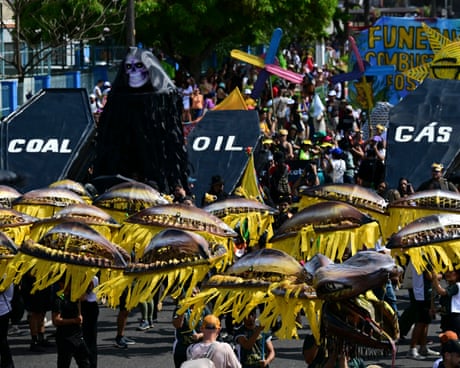The main purpose of this ongoing blog will be to track planetary extreme, or record temperatures related to climate change. Any reports I see of ETs will be listed below the main topic of the day. I’ll refer to extreme or record temperatures as ETs (not extraterrestrials).😜
Main Topic: New Study-Heatwaves Will Not Revert Towards Preindustrial Conditions For At Least 1,000 years After Emissions Target Reached
Dear Diary. Let’s not be doomists here. Even though according to the new study that I’m presenting today, which is right up my alley landing squarely in our ‘how fast how bad bucket,’ that suggests the climate is so broken that ‘normal’ heatwave patterns won’t occur for 1000 years no matter what we do, we should still fight to keep carbon levels in the atmosphere as low as possible. After all, heatwaves will be even worse should we miss United Nation’s targets.
Heatwaves might become so bad that portions of the Middle East and Southern Asia might become uninhabitable later this century should we fail to act, as I’ve stated the last few years.
Here are more details from the Guardian:
‘Damned if we do but completely stuffed if we don’t’: heatwaves will worsen longer net zero is delayed
A new study suggests heatwaves will not revert back towards preindustrial conditions for at least 1,000 years after emissions target reached

Australian scientists say heatwaves will be hotter, longer and more frequent the later net zero is reached globally. Photograph: Lisa Maree Williams/Getty Images
Donna Lu Assistant editor, Australian scientists say heatwaves will be hotter, longer and more frequent the later net zero is reached globally.
‘Damned if we do but completely stuffed if we don’t’: heatwaves will worsen longer net zero is delayed
A new study suggests heatwaves will not revert back towards preindustrial conditions for at least 1,000 years after emissions target reached
Heatwaves will become hotter, longer and more frequent the later net zero emissions is reached globally, new research suggests.
Scientists at the ARC Centre of Excellence for 21st Century Weather and Australia’s national science agency, the CSIRO, simulated how heatwaves would respond over the next 1,000 years, examining the differences for each five-year delay in reaching net zero between 2030 and 2060.
The research, published in the journal Environmental Research Climate, found that for countries near the equator, delaying net zero until 2050 would result in heatwave events that break current historical records at least once yearly.

The study also suggests that heatwaves will not revert back towards preindustrial conditions for at least a millennium after net zero is reached, which “critically challenges the general belief that conditions after net zero will begin to improve for near future generations”.
“The thing with net zero and heat waves is: we’re damned if we do, but we’re completely stuffed if we don’t,” the study’s lead author, Prof Sarah Perkins-Kirkpatrick of the Australian National University, said. “We’re already locked into a certain amount of warming.”
Sign up to get climate and environment editor Adam Morton’s Clear Air column as a free newsletter
Stabilising global heating at 1.5C or 2C would still result in impacts “that we haven’t yet experienced, including worse heatwaves”, she said. “The thing is, if we delay net zero – up to 30 years and even longer – those impacts are only going to get worse. We’re already locked into some, but the longer we leave net zero, the worse it’s going to be.”
“[In Australia] you have the Coalition basically saying: net zero is useless, it’s pointless, it’s not worth it, it’s going to cost us too much money,” she said. “Well, it’s going to cost us even more if we don’t even get to net zero by 2050.”
“The silver lining to this sort of study, if there is one, is that we have time to adapt … so when these heatwaves occur, we’re as prepared for them as possible,” she said. “We know the impacts of heatwaves – there’s so much understanding about the health impacts, ecosystem impacts, impacts on financial services.
“What those adaptation strategies look like – that remains to be seen,” she said. “Those conversations can start now.”
The modelling was done using Australia’s global climate simulator, known as Access, and defined a heatwave as at least three consecutive days where temperatures are above the 90th percentile for maximum temperature.
Prof David Karoly, a decorated climate change scientist and councillor with the Climate Council, who was not involved in the research, said the findings were not surprising.
“There is a clear relationship between the cumulative emissions of carbon dioxide in the atmosphere and global mean temperatures,” he said.
Karoly added that the study’s results were interesting but one caveat was that there were uncertainties in the modelling relating to potentially important processes such as rainfall changes, because the geographical representation of Australia and other regions in the Access model was of a lower resolution than for other climate simulators.
Explore more on these topics:
Here are some “ET’s” recorded from around the planet the last couple of days, their consequences, and some extreme temperature outlooks, as well as any extreme precipitation reports
Here is More Climate News from Wednesday:
(As usual, this will be a fluid post in which more information gets added during the day as it crosses my radar, crediting all who have put it on-line. Items will be archived on this site for posterity. In most instances click on the pictures of each tweet to see each article. The most noteworthy items will be listed first.)